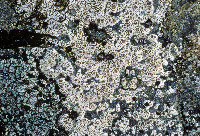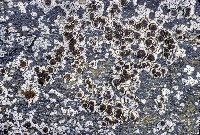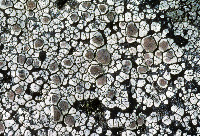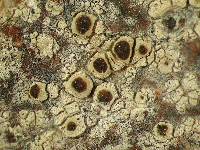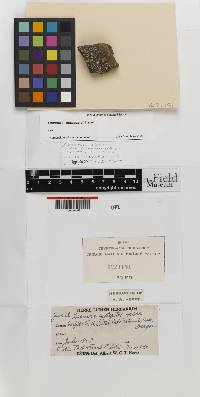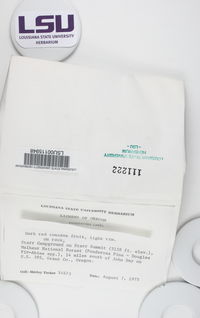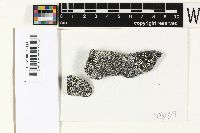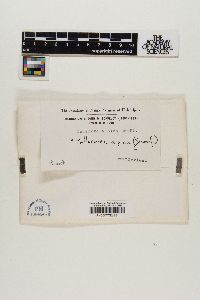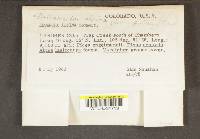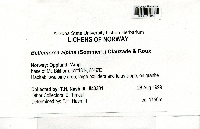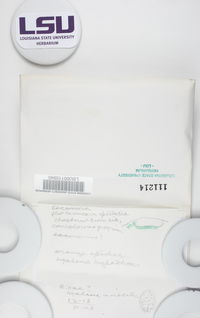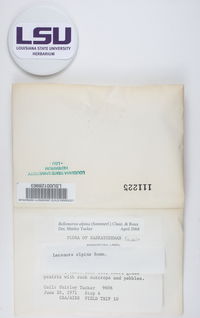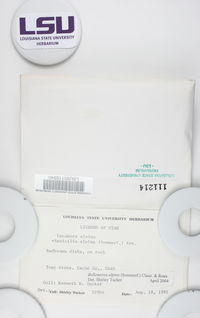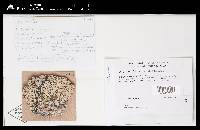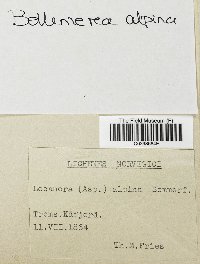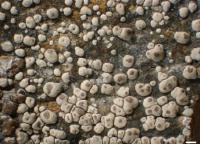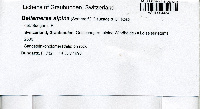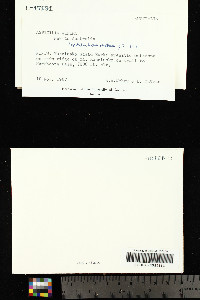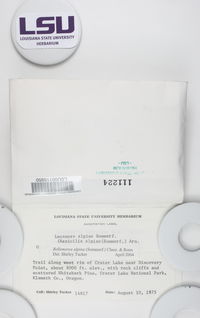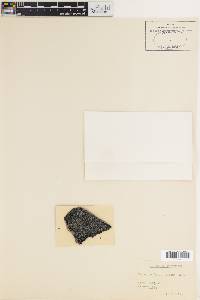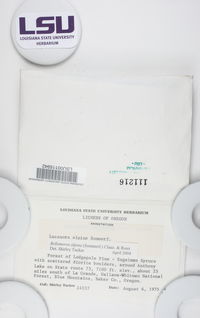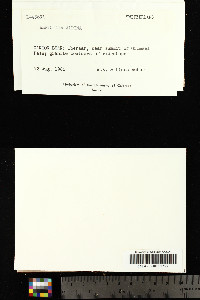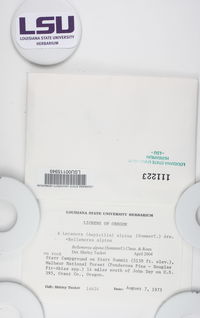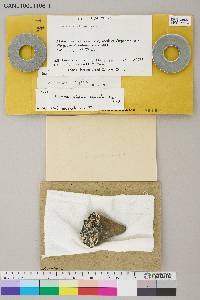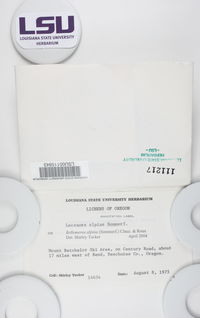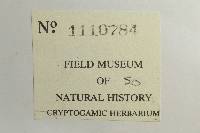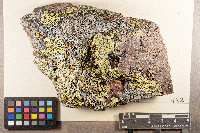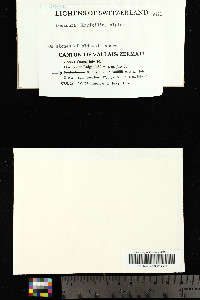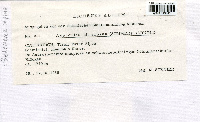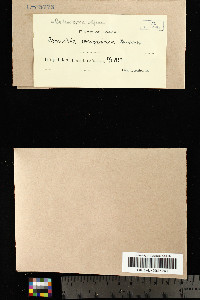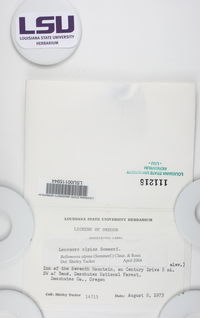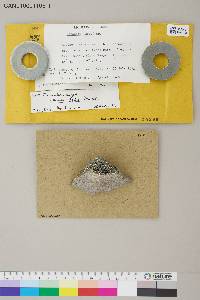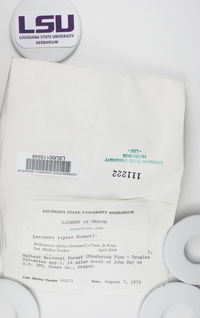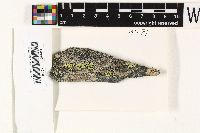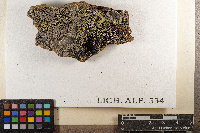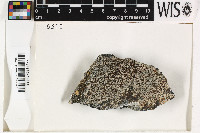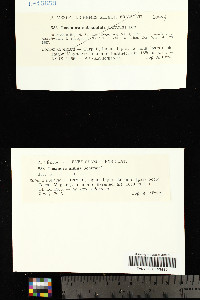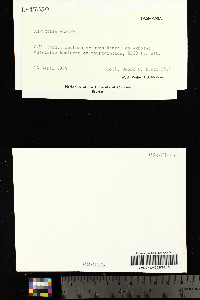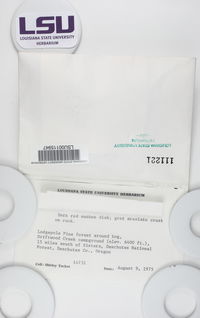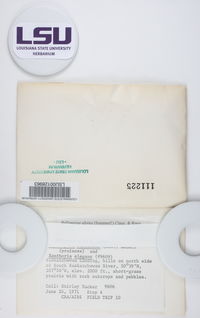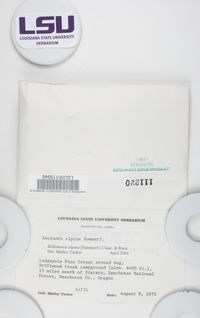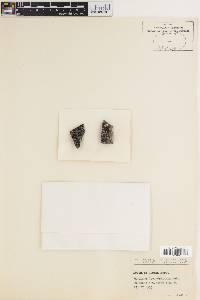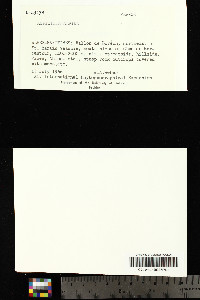
Consortium of Lichen Herbaria
- building a Global Consortium of Bryophytes and Lichens as keystones of cryptobiotic communities -
- Home
- Search
- Images
- Species Checklists
- US States: O-Z >
- US National Parks
- Central America
- South America
- US National Parks
- Southern Subpolar Region
|
|
|
|
Family: Lecideaceae
[Aspicilia alpina (Sommerf.) Arnold, moreAspicilia alpina f. alpina (Sommerf.) Arnold, Aspicilia alpina f. rehmii (Kremp.) Räsänen, Aspicilia alpina subsp. alpina (Sommerf.) Arnold, Aspicilia alpina subsp. fraudans Räsänen, Aspicilia alpina var. alpina (Sommerf.) Arnold, Aspicilia alpina var. dealbata Räsänen, Aspicilia alpina var. evolutior (Zahlbr.) Oxner, Aspicilia alpina var. fraudans (Räsänen) Oxner, Lecanora alpina Sommerf., Lecanora alpina f. alpina Sommerf., Lecanora alpina f. rehmii (Kremp.) Zahlbr., Lecanora alpina var. alpina Sommerf., Lecanora alpina var. evolutior Zahlbr., Lecanora alpina var. oxydata H. Magn., Lecanora alpina var. sulphurata Th. Fr., Lecanora applegatei Herre] |
Nash, T.H., Ryan, B.D., Gries, C., Bungartz, F., (eds.) 2007. Lichen Flora of the Greater Sonoran Desert Region. Vol 3. Thallus: conspicuously areolate-cracked, rather thick, 1-5 cm in diam., ±orbicular, at times spreading irregularly among other lichens; different thalli often growing adjacent to each other in a mosaic pattern areoles: flat to convex, angular or rounded, often fertile, (0.2-)0.5-2(-2.7) mm in diam., contiguous, separated by cracks or ±dispersed, especially at margins; prothallus: black surface: whitish to beige, fawn, or pale brown, or gray to blue-gray, dull, without soredia cortex: 10-30 µm thick, uppermost part ±brown, 5-12(-15) µm thick, with cells 5-7 µm in diam., covered with a thin epinecral layer, (0-)1-5 µm thick photobiont: chlorococcoid, cells ± round, 7-18 (-20) µm in diam. Apothecia: immersed, aspicilioid, numerous, (0.2)0.5-1.5 mm in diam., 1-2(-5) per areole, round to irregular or ±angular, concave at first, becoming plane or convex and ±sessile in older fruits disc: brown-red to red-brown when wet or blackish brown to brown-black when dry, rather often pruinose thalline margin: thin, ±elevated, concolorous with thallus exciple: thin or absent, (0-)1025(-30) µm wide, I+ blue; uppermost cells: brown, ±globose, 4-5(-6) µm in diam. epihymenium: brown, N- hymenium: hyaline, I+ blue, (60-)70-100(-110) µm tall; paraphyses: 2-2.5(-3) µm wide, with ±swollen apices 2.5-4 µm wide, usually with a thin, dark brown cap; subhymenium and hypothecium: pale, I+ blue, together 30-60 µm thick asci: clavate, (35-)40-50 x (12-)15-20 µm, Porpidia-type, 8-spored ascospores: hyaline, simple, ellipsoid, (8-)10-17(-20) x (5-)6-13 µm Pycnidia: often present, immersed, 1-6/areole conidia: bacilliform, at times ±fusiform, (4-)5-6 x 1-1.5 µm Spot tests: thallus K+ red, C-, KC-, P+ yellow-orange; medulla I+ blue Secondary metabolite: norstictic acid. Substrate and ecology: on ±exposed, siliceous rock, crystalline schist or volcanic rock as basalt in alpine areas and upper coniferous forests World distribution: bipolar; arctic-alpine; Eurasia; North America (south to California, Arizona), Australia, New Zealand Sonoran distribution: central and northern Arizona. Notes: Bellemerea alpina is a rather common and abundant species at high elevation, at least in the Pacific NW. It is quite variable, but easily recognizable by its typical thallus and the K+ red reaction (norstictic acid). |
|
|
|
Powered by Symbiota



